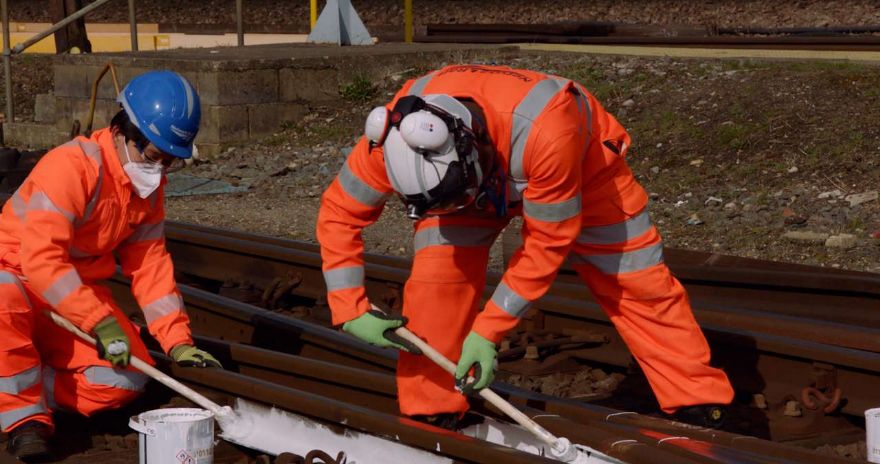
In the lead up to summer,
Network Rail will use about 1,500 litres of white paint — sufficient to cover the equivalent of 30,000m
2 — to help mitigate the challenges extremely hot weather poses for the railway. Last year hot weather caused rails to buckle, leading to 350,006 minutes of delays to journeys, but hundreds of rail staff — armed with paint, brushes and rollers — are taking to the tracks to get the railway ready for the hot months ahead by painting sections of railway throughout Britain white, to help reflect the sun rays and reduce overheating and buckling.
Lisa Angus, Network Rail’s industry weather response director, said: “Soaring temperatures on the railway can put a huge amount of pressure on our infrastructure. With extreme weather events becoming more frequent we are working hard to keep passengers moving throughout the summer months ahead.
“Last year we announced plans to invest £2.8 billion over the next five years to make the network more resilient to the issues caused by climate change. Our railway has 20,000 miles of track and in a summer heatwave, rails in direct sunshine can be as much as 20°C hotter than air temperature, which can cause them to buckle and lead to disruption.
“Painting parts of the rail white means they absorb less heat, reducing the risk of expansion. Typically, a rail painted white is 5°C to 10°C cooler than one left unpainted. We also work closely with specialist weather forecasters and local weather stations to make necessary plans and take action so rails are less likely to buckle.”
Ms Angus concluded: “This includes checking track stability each winter, as part of ongoing maintenance, and strengthening weak parts. We have installed probes on some parts of the railway to alert us when track temperatures rise. This information helps us know when to slow down trains, so they exert less force on the rail.”